By Nai Mu, your cosmic guide from Ticy City
This May, Thailand’s astrology scene is more alive than ever. Why? Because three major planets are shifting—yes, three! And one of them is none other than Rahu, the shadowy celestial force long feared by the spiritually inclined. Thais have always had a wary relationship with this so-called “malefic planet,” and I, Nai Mu, your go-to mystical storyteller from God’s City via Ticy City, am here to explain why everyone’s buzzing about Rahu again.
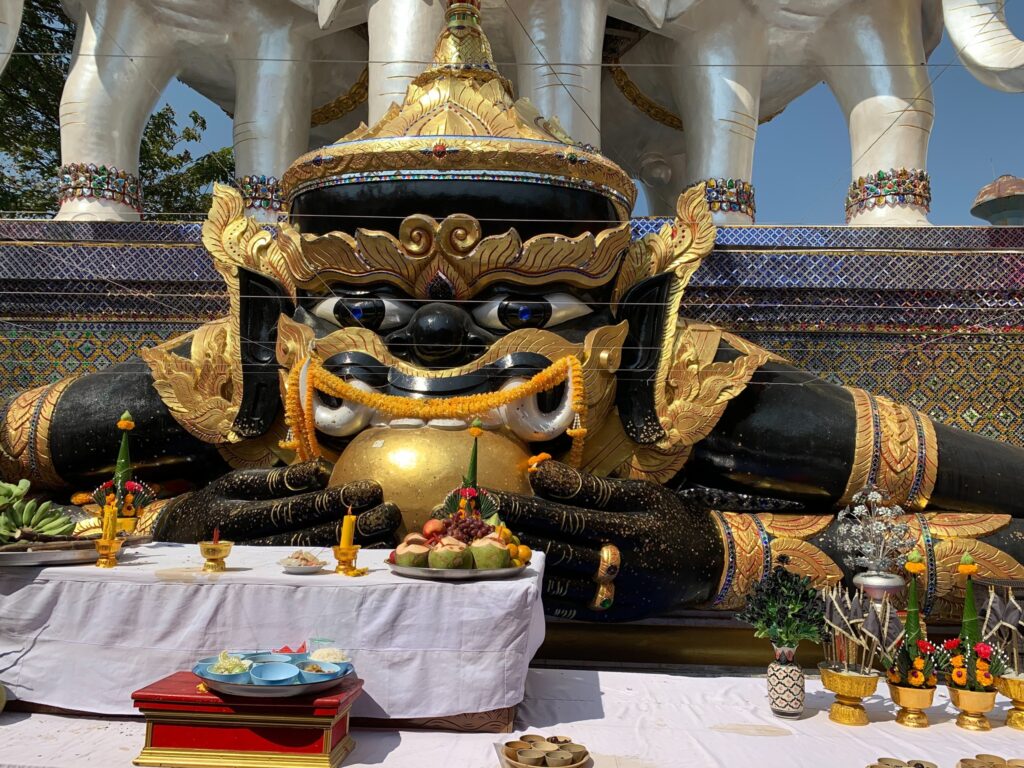
The Fear of the Unknown
Let’s rewind to Monday, May 5th. Personally, I felt something shift. People across the country were lighting black incense and offering symbolic foods in synchronized ceremonies. Temples and astrologers were hosting special rites to appease Rahu. Why the fuss? Because according to Thai astrology, May is a power-packed month:
- May 5: Rahu shifts
- May 13: Jupiter moves
- May 19: Saturn follows
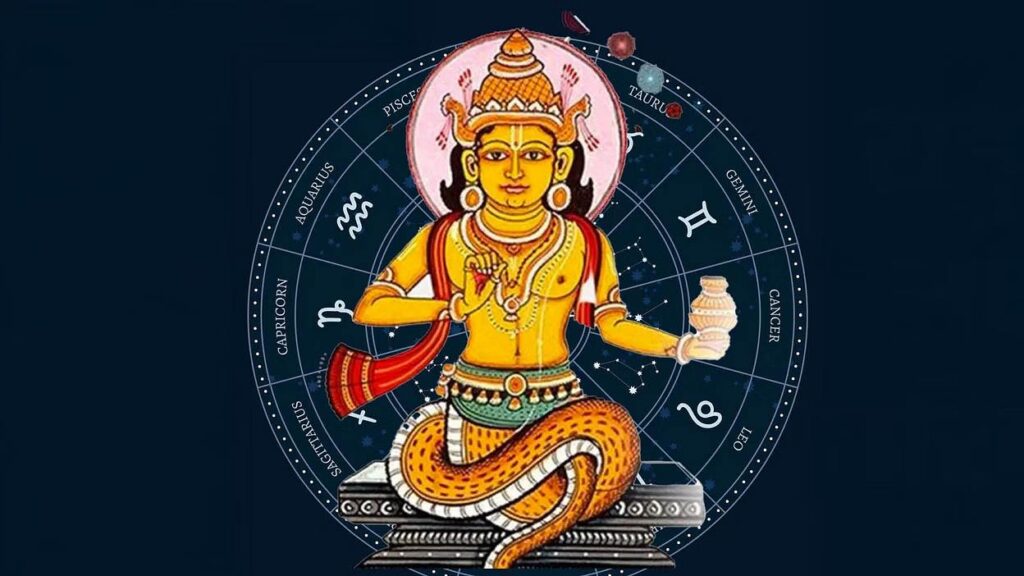
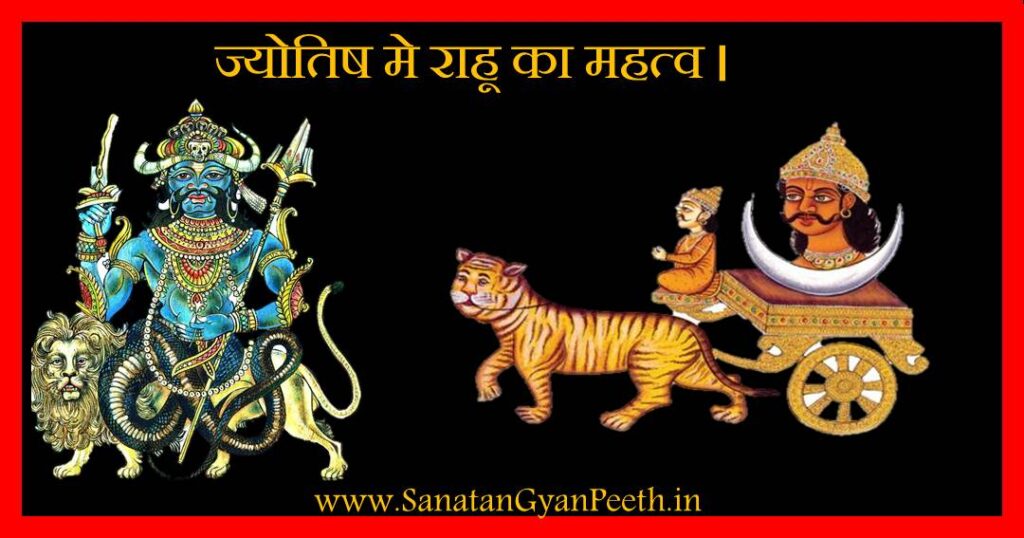
With such cosmic traffic, the fear of “unseen dangers” runs high—especially from Rahu, the airy, shadowy force known for disrupting lives and stirring up chaos.
Rahu: The Dark Mirror of Humanity
In spiritual belief, Rahu is the cosmic trickster. He represents worldly desires—lust, greed, obsession, confusion, ego—and the lack of mindfulness that can lead us down dark paths. We all carry a little Rahu within. But when we practice awareness, logic, and self-reflection, we escape the grip of his shadow.
Scientifically speaking, Rahu corresponds to lunar and solar eclipses. A solar eclipse occurs when the moon blocks the sun, and a lunar eclipse happens when the earth’s shadow falls on the moon. These astronomical events mirror the spiritual symbolism: Rahu disrupts clarity and casts darkness, if only for a moment.
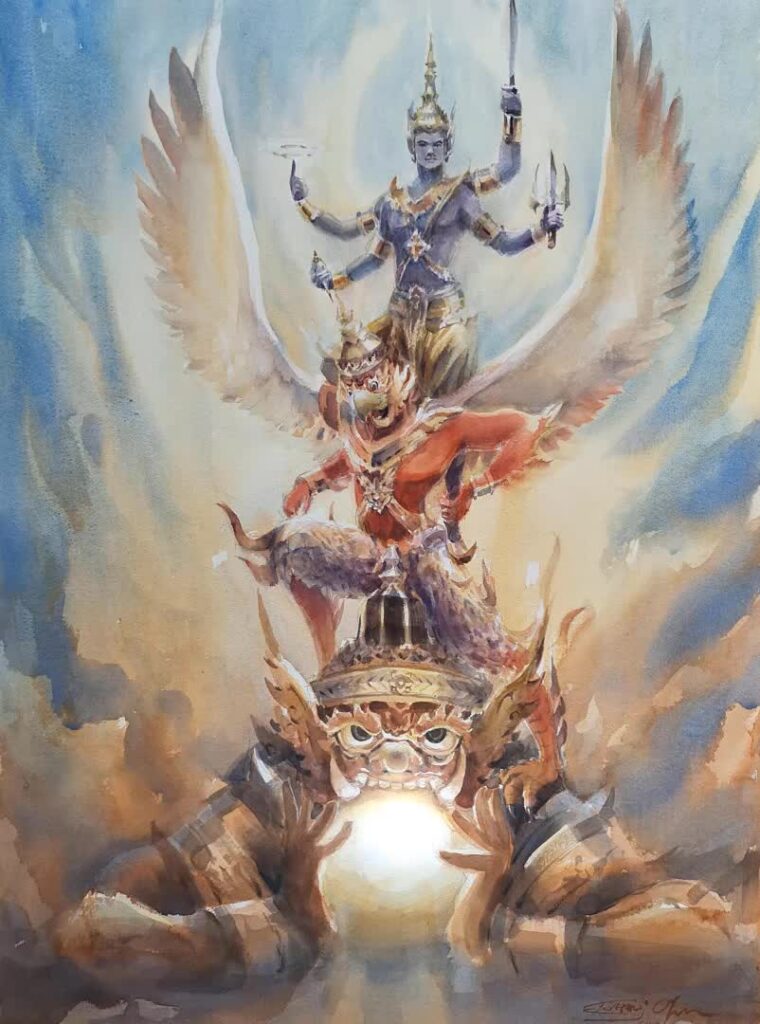
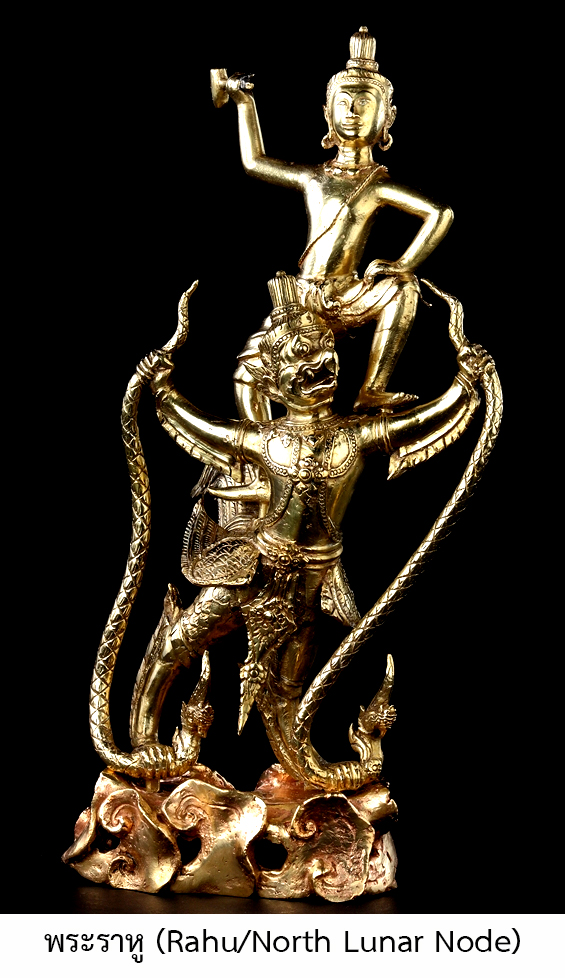
Why the Rituals?
In a world where jobs, income, and even relationships feel uncertain, rituals offer comfort. For Thais, “Mu” (mystical belief) is less about superstition and more about peace of mind. As long as it doesn’t hurt anyone—or your wallet—what’s the harm?
In India, Rahu is honored during eclipses, believed to be the best time to chant and ask for protection. In Thailand, we follow suit with elaborate temple ceremonies. For example, on May 28, Wat Khun Chan in Talat Phlu will hold another Rahu ritual—don’t miss it!
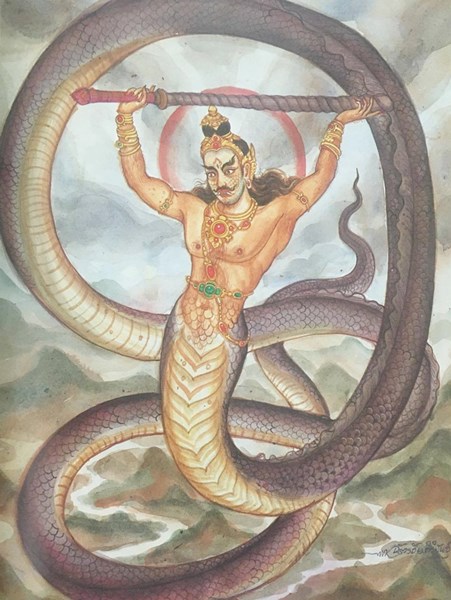
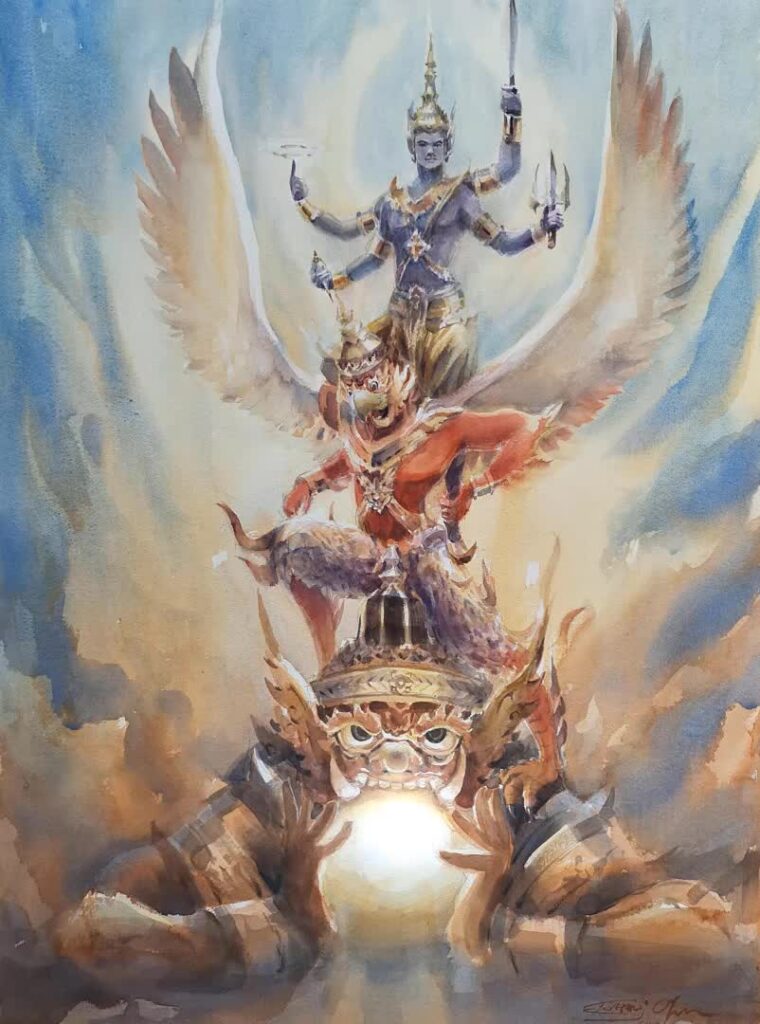
Rahu’s Origin Story (Yes, It’s Wild)
According to ancient legend, Lord Shiva created the nine planets by grinding unique materials and bringing them to life with divine chants. For Rahu? Shiva used 12 demon heads. Hence, during Rahu rituals, we light 12 black incense sticks—one for each head.
Rahu was born to the demon king Vepachitti and the mystical being Simhika. He has a fearsome face, four arms, a naga-like tail, and in some texts, rides a Garuda or eight black horses. Others say he just floats through the skies—an “astral demon” ruling the southwest and commanding meteors.
In the Ramayana, Rahu is reborn as Nilphanan, one of the 18 divine beings who took monkey form to help Rama.
But here’s the most famous myth:
During the churning of the cosmic ocean to retrieve the nectar of immortality, Rahu disguised himself as a handsome deity to sneak a sip. But just as he drank, the Sun and Moon recognized him and called him out. Lord Vishnu (or in some versions, the enchanting Mohini) hurled a discus and sliced Rahu in two. Since he had already tasted the nectar, Rahu didn’t die—but forever swore vengeance on the tattletales. This is why eclipses happen—Rahu “swallows” the Sun and Moon in revenge.
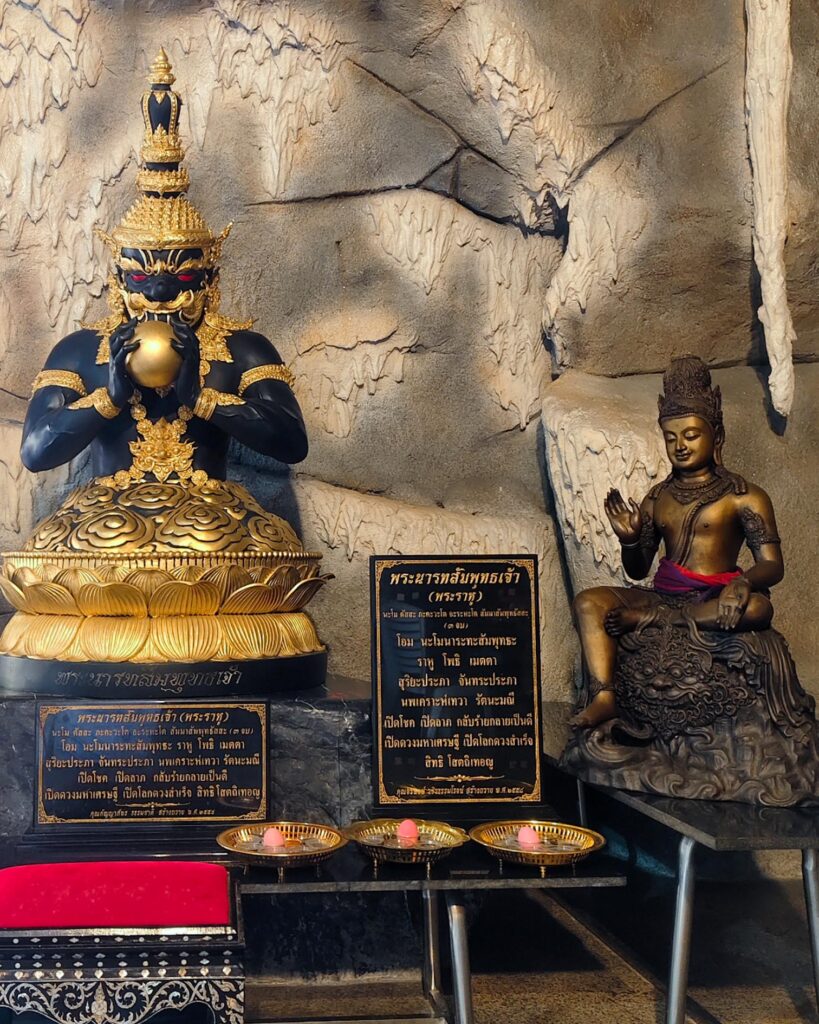
The Karma of Siblings
Another tale says the Sun, Moon, and Rahu were once human siblings born into a wealthy family. When their parents died, the elder two took everything, leaving Rahu with a small bamboo basket. During merit-making rituals, the eldest used a golden bowl and wished to be reborn as the Sun. The middle child used silver, hoping to become the Moon. Rahu, angry and empty-handed, made his offering with the basket and wished to overshadow his siblings someday. Wish granted.
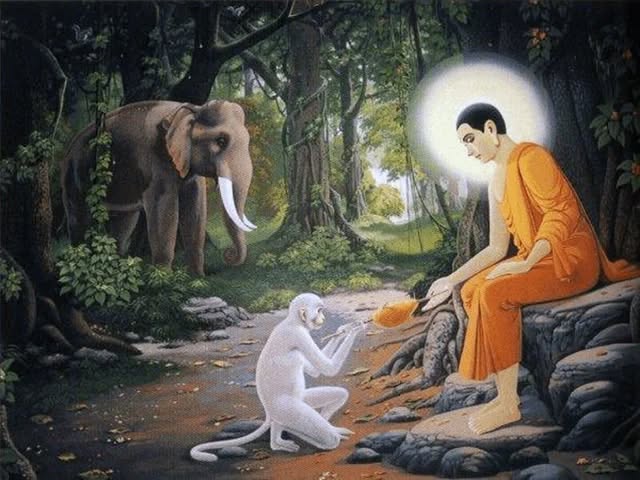
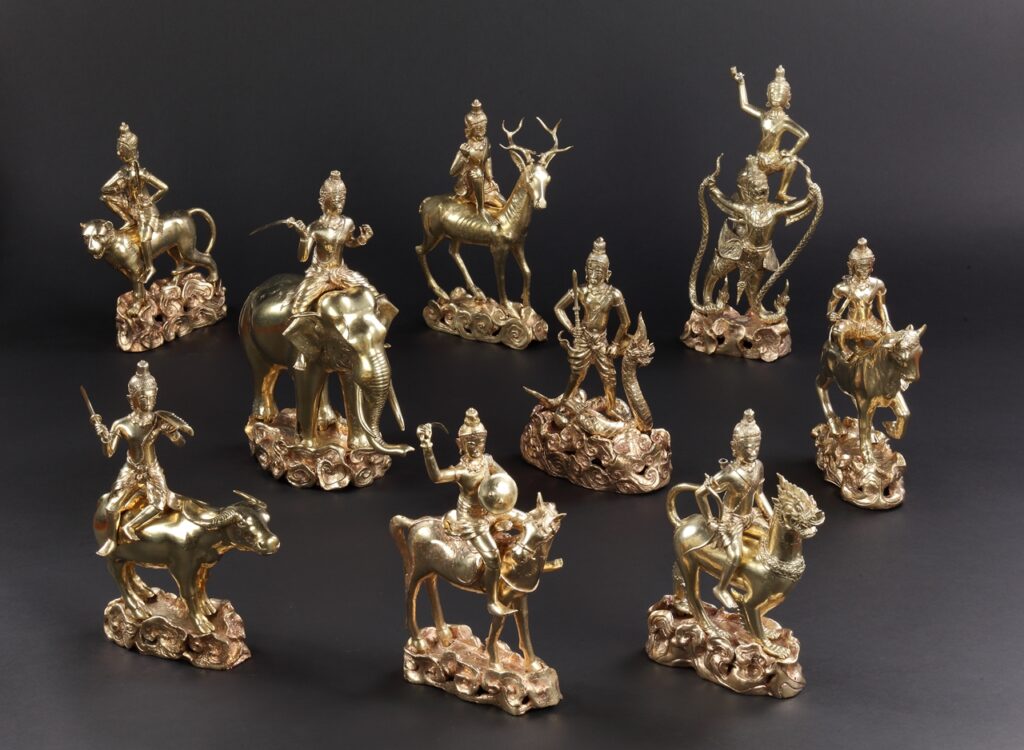
Rahu’s Devotion to the Buddha
Despite his fearsome image, Rahu has a spiritual side. In Buddhist texts, he once raised his head humbly to gaze at the Buddha, accepting the Dhamma as his path. According to the Anagatavamsa scripture, Rahu will one day achieve enlightenment as the fifth future Buddha—Narada Samma Sambuddha.
Every year during Songkran, Thais bathe statues of the nine planetary deities. You’ll find “Rahu Riding the Garuda” at the National Museum and at temples across the country—thanks to astrologer Ajarn Luck Rerkchanithet, who established shrines in Lamphun, Korat, Bangkok, and Nakhon Si Thammarat.
Rahu isn’t just a planet. He’s a cosmic force, a mirror to our darkest instincts, and oddly enough, a future Buddha. Whether you believe in astrology or not, there’s something poetic about the way mythology and science converge in his story.
So next time you see the moon darken or the sun flicker into a ring of fire—remember, Rahu’s watching. Maybe say a little prayer, light 12 sticks of incense, or just pause and reflect. After all, it’s in the shadows that we learn to seek the light.
Story by Nai Mu
Ticy City – More than just a story.








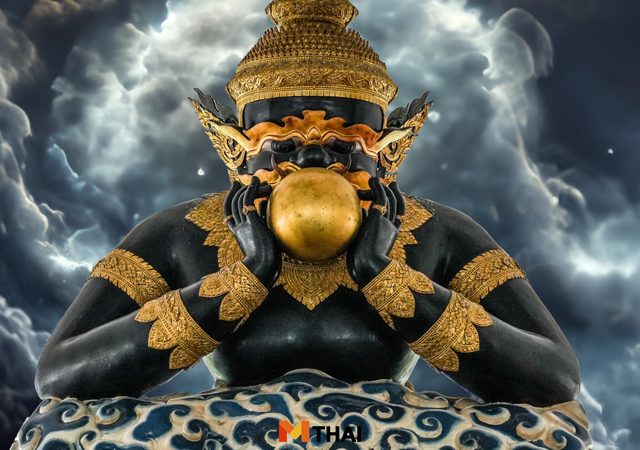
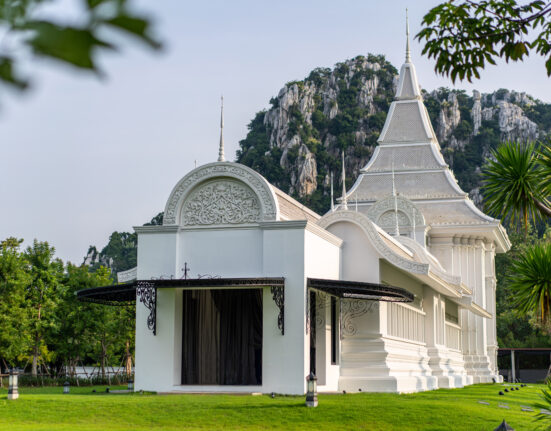
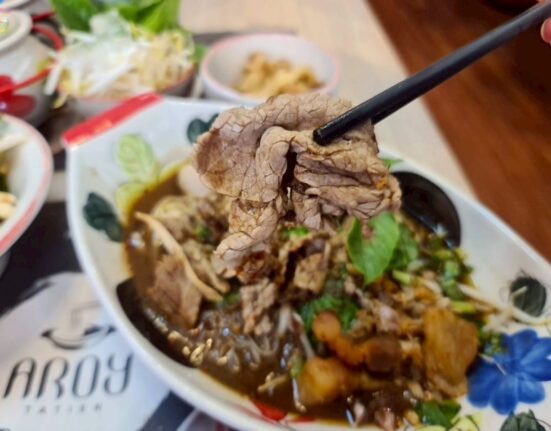
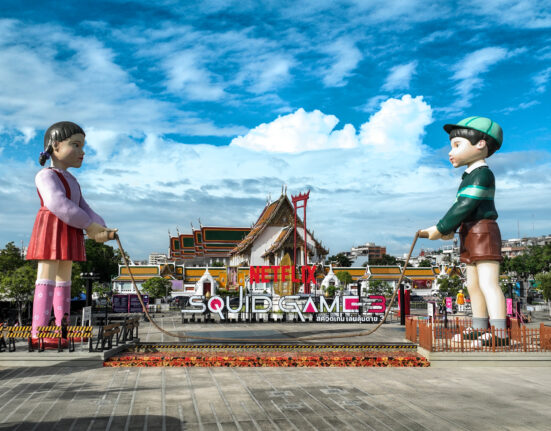

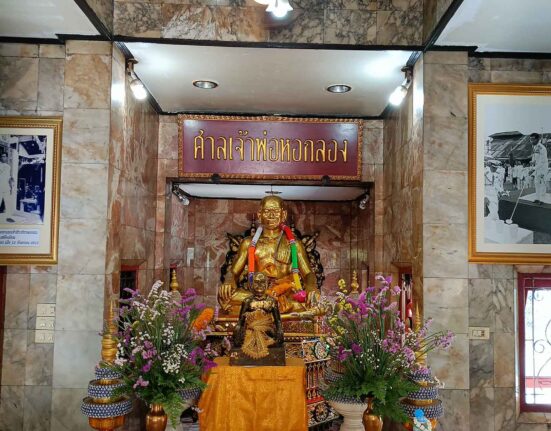

Leave feedback about this